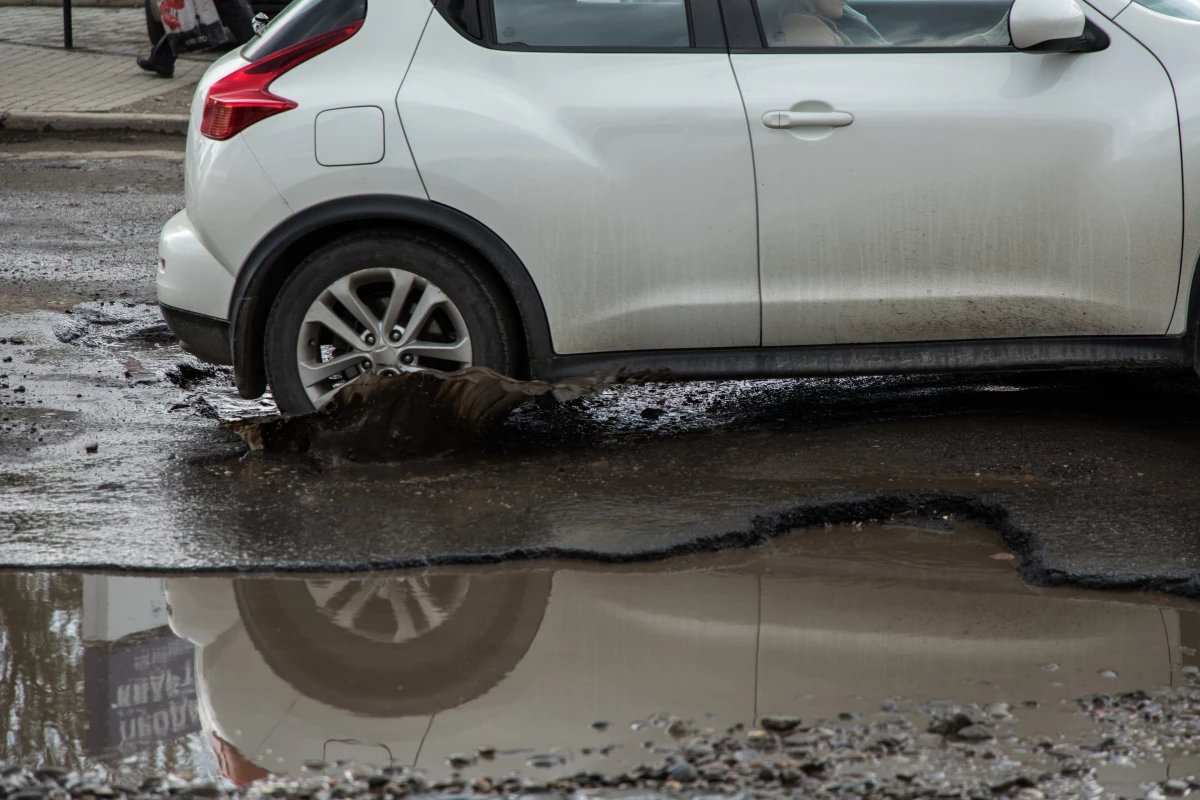In 2022, England spent £1.2 billion (about US$1.5 billion) repairing potholes. That's no insignificant sum of money – and lord knows what they've cost the country as a result of an estimated 5,000 pothole-related accident injuries that have happened since 2018.
Dr. Benyi Cao of the University of Surrey has taken on the challenge of coming up with a solution – and indeed, he's been awarded a £625,000 ($780,000) research fellowship to pursue, develop and test a system designed to stop potholes from developing in the first place.
"You need basically three elements for pothole formation," Dr. Cao told us over a video call. "The first is a surface crack – these form and expand over time due to traffic, we can't avoid that. The second is water, and the third is the freeze/thaw cycling. We get these small cracks, and then water seeps into the cracks. In winter, it gets down to about -10 °C (14 °F) in the UK, so that water freezes and expands, pushing open those cracks. In spring, when the temperature rises again, that water thaws and contracts."
"This repeated freezing and thawing, and subsequent expansion and contraction, can weaken the asphalt binder – the glue of the road surface," he continued. "This causes all kinds of deterioration; potholes is just one problem, but it's a major one. So I started thinking about how to warm up the road surface in winter, so no freezing happens."
This has been attempted before in other demonstration projects, but typically with heating elements embedded in the road surface. Cao was looking for a much more efficient and lower-carbon solution.
"So I'm thinking," said Cao. "We have a road here, and there's a huge amount of ground underneath the road – why don't we just use this ground itself as a collector and storage for heat in summer, and extract that heat again in winter?"
The system Cao has designed works roughly like this: during road construction, workers will lay a series of slim, 10-mm-diameter plastic pipes across the road, maybe every 5-10 m (16-32 ft). Beside or below the road, they'll dig down maybe 5-10 m into the subgrade soil, and create more loops of piping down there. The surface loops and the underground loops will interface at a heat pump.

The subgrade soil around the underground loops will be impregnated with tiny microcapsules, explained Cao: "These capsules are made of a phase-change material, perhaps like paraffin or wax, that can store a lot of heat. The shells are going to be graphite or graphene based materials, to transfer heat quickly."
All the heat pumps really need to do is gently circulate water, with an antifreeze mixture, around the loops. And not continuously, either; once enough heat is stored underground, they can be switched off, and they won't need to be switched back on until the road temperature drops to a couple of degrees above freezing.
Cao says a single set of underground coils and heat pump could likely handle more than a 100 m (330 ft) length of road. "Every unit of electricity you use to run that heat pump, moves four units of thermal heat," he said. "So it's quite efficient – way more energy efficient than the electric road heater systems."
Throughout summer, when the road surface gets nice and hot, the heat pumps will transfer that heat into the phase change capsules in the soil, and then in winter, when temperatures get close to or below freezing, the pumps will switch on in reverse. "We just need to avoid freezing of the road, so we only need to keep the temperature above zero," said Cao. "It shouldn't be that difficult here in the UK."
With funding on board, Cao says the first step is to design and produce the phase change microcapsules. "That's a big part of the project," he told us. "Secondly, we're going to create a model road in the lab, probably about three meters (10 ft) long, in a very controlled environment in a big soil chamber. Thirdly, we'll do a numerical simulation to see the long-term effects and overall performance and resilience of the system."
And then it'll be time to test it in the real world. "The last task is to do a full scale field trial with the Transport Agency," Cao said. "In that field trial, we'll embed some of these pipes and a pump under a road segment of maybe 20 meters (66 ft). We'll monitor the performance for a whole year, and that'll tell us if we've captured enough heat through summer and warmed the road properly in winter. The critical things we'll be looking at are whether we can keep the road surface from freezing, whether our ground loops are deep enough, do we need more phase-change material... Or maybe we're storing too much heat, and we can look at reducing pipe depth or using fewer microcapsules, or serving a longer piece of road... We'll be looking for the optimum approach."
Will it be economically viable to roll out across the United Kingdom? Well, that depends on a number of factors that'll be examined through the project. "We haven't done a cost analysis and I feel like we couldn't do one until the field trial," added Cao. "It'll be an additional cost to transport infrastructure, but we think there'll be benefits in terms of carbon emissions from pothole repairs, which are not insignificant – some 700 tons per year, and also in the lifespan of the new roads."
Fascinating stuff, we look forward to the results.
Source: University of Surrey






